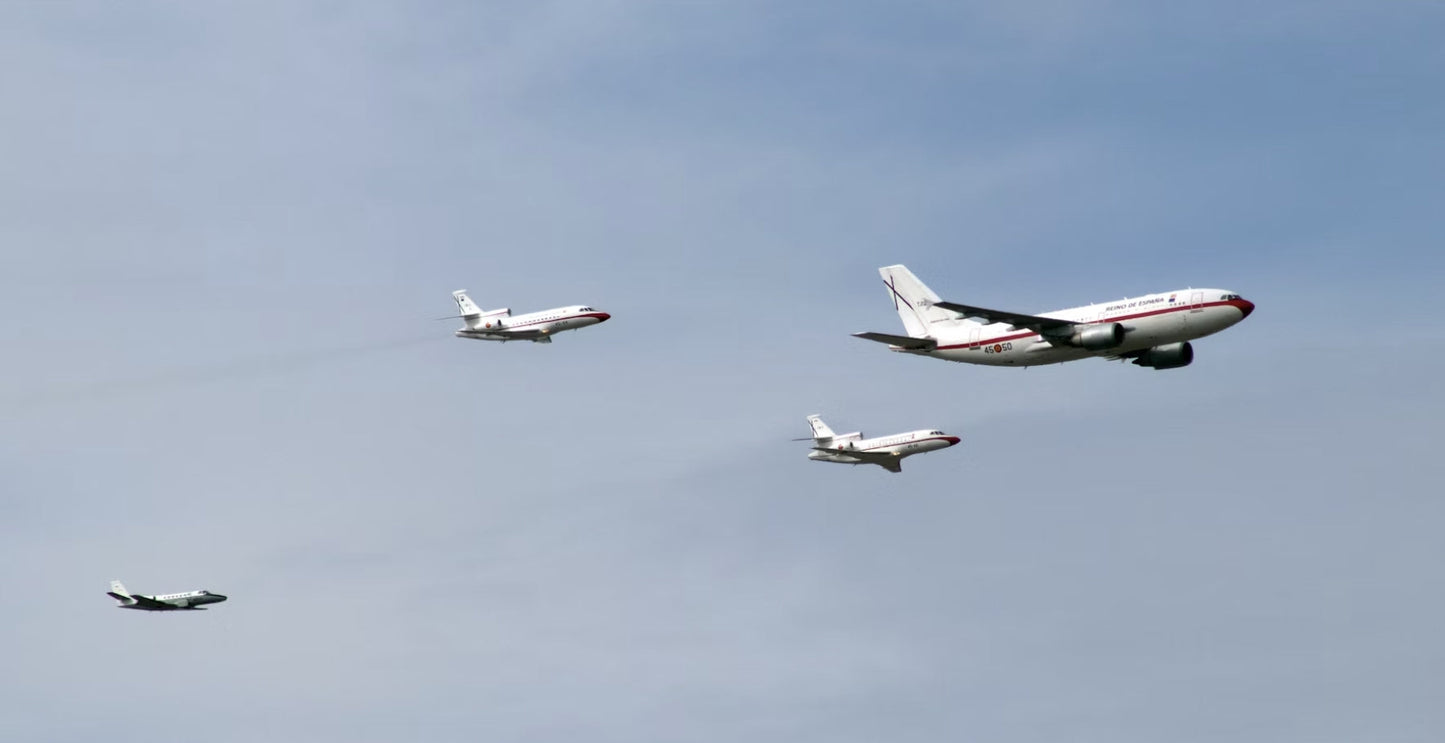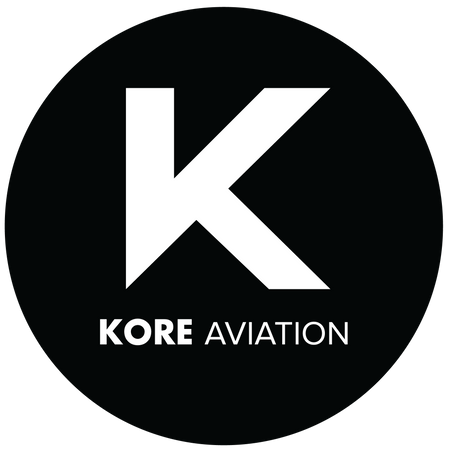
Kore Aviation - The term 7 phases of flight refers to the key stages a pilot and aircraft go through from before departure until arrival. Knowing these phases helps everyone from student pilots to passengers understand how flights are managed and how safety is built in at each step.
In this article you will learn what each of the seven phases of flight are what happens in each and how pilots use tools, decision making and clear communication to guide every stage safely.
What Are the 7 Phases of Flight?
Here are the seven phases of flight in sequence:
- Preflight Planning
- Taxiing to Runway
- Takeoff
- Climb to Cruising Altitude
- Cruise
- Descent and Approach
- Landing and Roll‑out
We will go through each phase in detail below.
Also read: How Hard Is It to Become a Pilot?
Phase 1: Pre‑Flight Preparation
This first phase happens before the aircraft moves. It includes:
- Reviewing the flight plan: route, distance, fuel needed, weather, and backup options.
- Inspecting the aircraft for safety: checking tires, controls, fuel levels, and instruments.
- Confirming weight and balance: weight of passengers, cargo, and fuel must be within safe limits.
- Briefing passengers and crew: communicating what to expect and safety procedures.
This phase sets up all other phases of flight. Errors here can lead to problems later in flight.
Discover more: How to Prepare for the First Solo Flight?
Phase 2: Taxi
After pre‑flight checks the aircraft moves under its own power from the gate through the taxiways toward the runway. During taxi the pilot:
- Communicates with ground control to get clearance and directions
- Checks that all systems like landing lights, flaps, and instruments are working
- Watches for obstacles and follows airport markings to stay safe
Good visibility, calm control, and clear communication matter in this phase. A headset that reduces noise helps pilots hear tower instructions and remain aware.
Phase 3: Takeoff
Takeoff is when the aircraft goes from ground to air. Key tasks include:
- Lining up on runway and getting takeoff clearance
- Applying full engine power while monitoring speed
- Lifting off the runway when enough speed is reached
- Retracting landing gear and adjusting climb rate
This phase requires full focus from pilots and crew because speed, control and environment factors change quickly.
Phase 4: Climb
Once airborne the aircraft climbs to its planned cruising altitude. Tasks here include:
- Managing engine power, pitch (angle of the nose) and speed
- Following air traffic control instructions for climb route
- Monitoring fuel consumption and engine performance
- Adjusting for winds as altitude increases
Climb can include different sub phases such as initial climb and transition to cruise climb.
Phase 5: Cruise
Cruise is the longest part of most flights. The aircraft flies at steady speed and altitude. The pilot’s focus shifts to:
- Monitoring systems for safety
- Following navigation route accurately
- Communicating with air traffic control as needed
- Adjusting for weather or air traffic conditions
Because cruise is more stable, pilots can manage workload, check maps or navigation tools, and verify progress carefully.
Also read: How to Improve Communication With ATC as a Beginner?
Phase 6: Descent and Approach
As the aircraft nears its destination the descent phase begins. This leads into approach. During this phase the pilot must:
- Descend carefully so as to reduce altitude and speed smoothly
- Configure the aircraft for landing (lower flaps, gear down)
- Align with the runway path and glide slope so that descent to runway is controlled
- Monitor weather, visibility, winds at destination airport
Approach is a critical phase of flight because precision and control matter most. Errors or delays here may force a go‑around (aborting the approach and climbing again).
Phase 7: Landing and Taxi to Gate
The final phase of flight involves:
- Touching down the aircraft gently on the runway
- Slowing down using brakes and sometimes thrust reversal or spoilers
- Exiting runway onto taxiway
- Using ground control to guide to gate
- Shutting down engines and completing post flight checks
This phase concludes the flight from gate to gate. Safety still matters here until the aircraft is parked and engines are off.
Also read: How Long Is Pilot Training?
Why Knowing the 7 Phases of Flight Matters
Understanding these 7 phases of flight helps passengers, trainee pilots, and aviation enthusiasts appreciate the care and procedure required for safe flying. It also helps pilots prepare and train properly by:
- Using checklists tailored for each phase to avoid missed items
- Anticipating communication needs, environmental changes, and tools required
- Staying mentally ready and focused during critical times like takeoff or landing
How Gear Supports Every Phase
Good gear, especially a reliable aviation headset, plays an important role throughout all 7 phases of flight. A headset helps by:
- Allowing clear radio communication in noisy environments like taxi or climb
- Reducing fatigue from engine noise during cruise
- Enhancing attention during approach and landing when precision counts
Check out Kore Aviation’s student pilot headsets for clarity and comfort through every phase of flight.
How Pilots Train for Each Phase
Pilots practice each phase of flight in training sessions. They simulate climbs and descents practice abnormal takeoffs and landings and rehearse the sequence so each transition between phases becomes smooth.
Simulators help a lot for approach, descent and emergency scenarios.
Learn more about what pilots use in the cockpit including headsets and tools in flight training.
Discover More: What headset do pilot use?
FAQs 7 Phases of Flight
-
How long does each phase of flight last?
It depends on the flight. Taxi might take a few minutes. Takeoff through climb to cruising altitude might take 15 to 30 minutes or longer. Cruise is typically the longest part. -
Is one phase riskier than the others?
Yes. Takeoff, approach and landing are usually considered higher risk phases because changes are rapid and demands are high. -
Does pilot training cover all the phases equally?
Training covers every phase but special attention is given to critical phases like takeoff, approach and landing because errors during those phases often lead to incidents. -
Can weather extend or shorten phases?
Yes. Poor weather might slow climb or require different approach paths. Delays on ground or diverted landing paths alter phases. -
Do small airplanes go through the same phases?
Yes. The same 7 phases apply though the speed and duration of each phase may be shorter and tools may differ. -
Why is continuous communication so important?
Communication with air traffic control and ground control is essential during many phases to ensure safety, correct routing, and response to changing conditions. -
Is climb always steep?
Not always. Climb rate depends on aircraft type weight weather and airspace. -
Do pilots always follow these phases strictly?
Yes mostly, but sometimes phases overlap or are skipped in unusual situations like aborting a takeoff or going around approach. -
What happens if weather changes during a phase?
The pilot may modify the plan. For example delaying descent or choosing alternate approach. -
Is communication different in each phase?
Yes. In taxiing and takeoff, pilot talks to ground and control tower. During cruise and descent communication with control centers is important. Clear audio matters in all phases. -
Does the 7 phases of flight apply to helicopters too?
Yes the broad phases apply though dynamics differ in climb rates hover or descent behavior.
Final Thoughts
The 7 phases of flight provide a clear map for every journey from gate to gate. Each phase has its own tasks, challenges and tools. To travel safely pilots train for all of them carefully and use gear that supports that work.
If you are training to fly or want clearer communication onboard make sure your headset supports you. Kore Aviation’s student pilot headsets offer comfort clarity and durability throughout all phases of flight.

